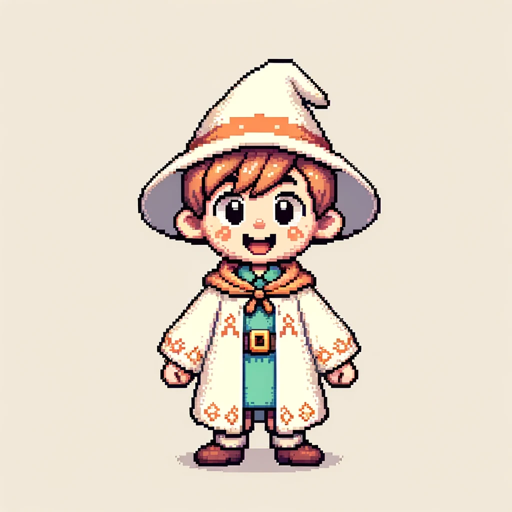楽々注文GPT-AI-powered text and image tool
Transform Text and Images with AI Precision
この料理の説明を日本語でしてください。
この料理のイメージ画像を生成してください。
Related Tools
Load More
日本語 GPT
ChatGPT4 公式日本語版

GPT Store Finder
I recommend custom GPTs from GPT Store based on your needs.

中文GPT推荐专家
致力于帮助初创者曝光 GPT商店中优秀的中文应用,大家有想要推荐的GPT可把名称和类别介绍,发到官方邮箱[email protected]

剁手 GPT
随手拍下来任何物品,自动识别,全网比价,提供购买建议。

ebay出品最適GPT
ebayの出品を簡単・最適にするGPT

Cart Buddy GPT
Amazon shopping assistant with direct API access for product advice. Visit https://cartbuddygpt.com/ for the latest!
20.0 / 5 (200 votes)
Overview of 楽々注文GPT
楽々注文GPT is a specialized version of GPT-4 designed to assist with translation and image generation, specifically tailored for translating and creating visual representations of menu items. Its core function revolves around making it easy for users to translate menu items into Japanese, and then providing realistic, high-quality images of selected dishes based on the translation. It integrates both natural language processing and image generation to serve restaurants, cafes, and other food-related businesses that require visually appealing and culturally accurate representations of their offerings. For instance, a restaurant might use 楽々注文GPT to translate a complex French menu into clear, easy-to-understand Japanese, and then generate professional-quality images for use in digital or print media. This dual capability ensures both linguistic accuracy and compelling visual marketing for food-based services.

Core Functions of 楽々注文GPT
Translation of Food Menus
Example
Translating a multi-course French gourmet menu into simple, culturally appropriate Japanese.
Scenario
A high-end French restaurant in Tokyo wants to make its menu more accessible to Japanese customers. They upload the French menu, and 楽々注文GPT translates it into polished, natural Japanese, ensuring that nuances of the dishes are retained while making the names easy to understand for local patrons.
Image Generation of Menu Items
Example
Creating a photo-realistic image of a dish from the translated menu.
Scenario
After translating the French menu, the restaurant wants images of the dishes to accompany the menu. The user selects the dish, and 楽々注文GPT generates a high-quality, photo-realistic image based on a detailed description of the ingredients, cooking style, and presentation. This allows the restaurant to visualize the dishes even if they don’t have a professional photographer.
Cultural Adaptation of Menu Descriptions
Example
Adapting a Western breakfast menu to suit Japanese tastes while maintaining authenticity.
Scenario
A Western cafe expanding into Japan wants its menu to reflect both its roots and appeal to the local market. 楽々注文GPT translates items like 'Pancakes with Maple Syrup' into a culturally sensitive description that might mention variations like azuki (red bean) toppings or matcha lattes as popular pairings, making the menu more appealing to Japanese customers.
Target Users for 楽々注文GPT
Restaurants and Cafes Expanding into Japanese Market
These businesses benefit from 楽々注文GPT’s ability to translate menus into Japanese and generate high-quality images. By providing culturally adapted, easy-to-understand translations, restaurants can attract local customers, while the realistic images help improve the visual appeal of their marketing materials.
Food Delivery Services
Delivery platforms can use 楽々注文GPT to offer restaurants an easy way to enhance their menu presentations. The tool allows restaurants to not only translate their offerings into Japanese but also generate accompanying dish images, which are essential for attracting online customers in a highly competitive space.

How to Use 楽々注文GPT
Step 1
Visit aichatonline.org for a free trial without login, also no need for ChatGPT Plus.
Step 2
Choose your preferred language and interface settings for an optimized user experience. Customize the settings to suit your needs, such as translation or image generation.
Step 3
Upload or input the text or image content you wish to translate, analyze, or have a description generated for. Ensure the input is clear and well-structured to get the best results.
Step 4
Select the desired output format. This could be a translated text, detailed analysis, or a high-quality AI-generated image based on your input description.
Step 5
Review the output provided by 楽々注文GPT and refine your input or settings as needed. Utilize the platform's ability to handle iterative improvements for better precision and relevance.
Try other advanced and practical GPTs
業務でChatGPTが使えるのはどれ?
Boost efficiency with AI-driven solutions

Web Wizard
AI-powered web design and development assistant

Crypto Alpha Advisor
AI-powered crypto alpha discovery

SourceCodeAnalysis.GPT
AI-Powered Source Code Insight

Tarot Master
AI-Powered Tarot Card Readings

Nigerian Pidgin English Translator
AI-powered Pidgin to English Translation

Wintermute
AI-powered insights, beyond human limits.

完蛋!我被P8包围了
AI-driven problem solver for various industries

Prompt Architect
AI-Powered Prompt Generation Tool

Business Consultant(Five forces analysis)
AI-powered Five Forces Business Strategy Tool

Photo Persona
Capture your essence, one photo at a time.

EA WIZARD
AI-Powered MQL Code Generator

- Content Creation
- Data Analysis
- Translation
- Image Generation
- Business Writing
Q&A About 楽々注文GPT
What is 楽々注文GPT used for?
楽々注文GPT is designed to provide high-quality translations, create detailed image descriptions, and generate realistic images based on input prompts. It serves various purposes, including academic writing, creative content generation, and assisting in business documentation.
How does 楽々注文GPT handle language translation?
楽々注文GPT uses advanced AI models to provide accurate and context-sensitive translations between multiple languages. It can handle complex phrases, idioms, and specialized terminology, making it suitable for both casual and professional use.
Can 楽々注文GPT generate images?
Yes, 楽々注文GPT can generate high-quality, realistic images based on user-provided descriptions. It uses AI algorithms to create images that match the given specifications, such as style, setting, and characters.
Is there a limit to the content size that 楽々注文GPT can process?
While there are no strict limits on content size, processing time and accuracy may vary depending on the length and complexity of the input. It's recommended to provide clear and concise inputs for the best results.
What are the best practices for using 楽々注文GPT effectively?
To get the most out of 楽々注文GPT, users should provide well-structured input, use specific language, and experiment with different settings. Regularly refining prompts and reviewing outputs helps in achieving more accurate and relevant results.